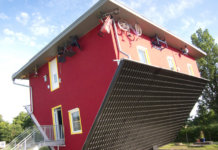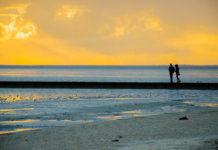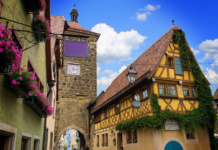Crazy statutes, rough buildings, creative fountains and the world’s narrowest street — that was all on part one of Germany’s craziest sites. Check out part two of the list here, via the local.de.
6. Goseck Circle (Goseck, Saxony-Anhalt)
This ancient site dates back to the 49th century BC. It’s from the Neolithic Period and is the earliest known example of a solar observatory.
![By Einsamer Schütze (Own work) [GFDL (http://www.gnu.org/copyleft/fdl.html) or CC BY-SA 3.0 (http://creativecommons.org/licenses/by-sa/3.0)], via Wikimedia Commons](https://www.ferryhouse.ag/wp-content/uploads/2016/10/Goseck-Circle.jpg)
And strangely enough, it wasn’t discovered until 1991! The circular construction consists of concentric ditches measuring 75 meters across. The two fence rings have gates that are aligned with the sunrise and sunset on solstice days.
7. The Devil’s Bridge (Kromlau, Saxony)
Built in 1860, the Rakotzbrücke, or Devil’s Bridge in English, was designed in the style of an “English Garden”. It sits inside of the Azalea and Rhododendron Park of Kromlau, just a few kilometers from the Polish border.
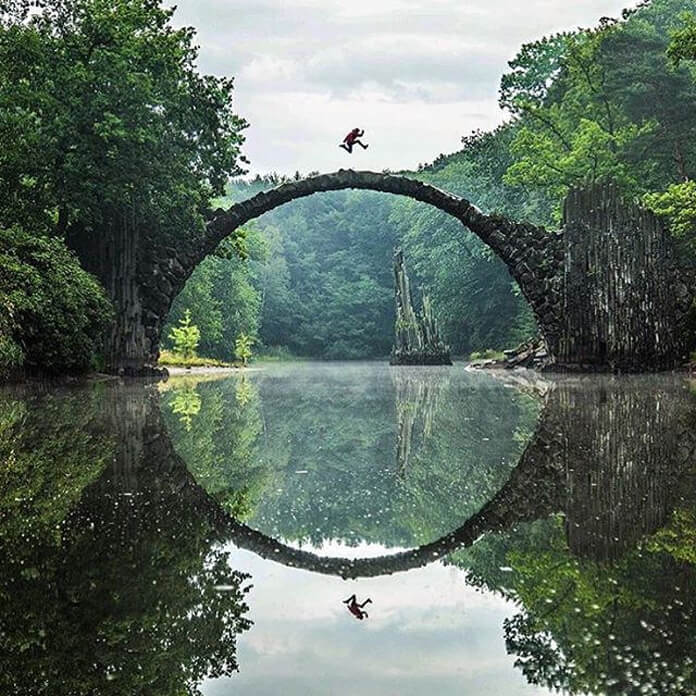
The bridge’s arch was designed in a perfect semi-circle so that the reflection creates a complete outline of a whole circle. You can visit the bridge for free within the park, but crossing it is strictly forbidden as the structure is very fragile.
8. Courtyard of Elements (Dresden, Saxony)
Ever wished the façade of your home could be artwork? Well, if you live by the “Hof der Elemente”, or Courtyard of Elements you’re in luck. It’s part of the Kunsthofpassage, in the new district of Dresden and one of Germany’s craziest sites. Artist tenants have decorated many of the buildings.
https://www.instagram.com/p/BJYDCyQDXBi/?tagged=hofderelemente&hl=en
This particular design was created by artist Annette Paul and dseigners Christoph Rossner and Andre Tempel. It finished piece catches rainfall, and is designed so that the arrangement of funnels and gutters channels water through the instrument-like pipes to create a water symphony.
9. Neuschwanstein Castle (Hohenschwangau, Bavaria)
One of Germany’s most famous sites is also one its most surreal. Nestled in the rugged hilltops of the Alpine foothills, the ornate castle has been stunning visitors for over a hundred years. It’s best viewed from the Marianbrücke, with beautiful Bavarian lakes dotting the background landscape. The castle looks like it’s straight out of a Disney film – which makes sense as it inspired Walt Disney’s Sleeping Beauty’s Castle.
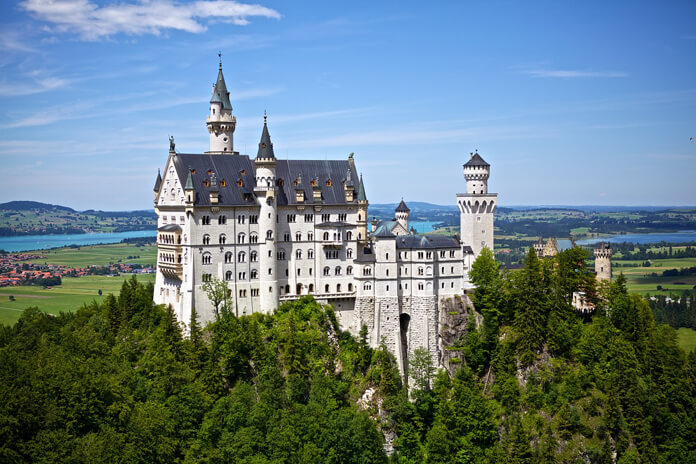
Ludwig II of Bavaria built the infamous castle, though he was only able to enjoy the castle for six months before his death in 1886. The castle was planned ot have more than 200 rooms, but only about 15 were ever completed. The interior is a mix of modern and tradition – with Middle Ages interior and “state of the art technology” like an electric bell and flushing toilet.
10. Friede sei mit Dir (Mitte, Berlin)
And the award for the wildest of all of Germany’s craziest sites is found right in the heart of Berlin. Translated to “Peace be with you” in English, the relief was completed by artist Peter Lenk. It features a naked man – only wearing a pair of red glasses and brown loafers – with his, uhm, member, stretching five floors up.
https://www.instagram.com/p/BCs82BFsv96/?tagged=friedeseimitdir&hl=en
The controversial façade covers the side of the editor’s office at Berlin’s left-wing Tageszeitung newspaper. Perhaps on purpose, the man in the artwork bears a striking resemblance to Kai Dickmann, the former editor-in-chief of Bild Zeitung – Germany’s best selling tabloid, which is headquartered across the street.

